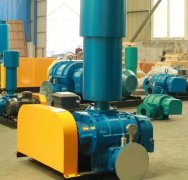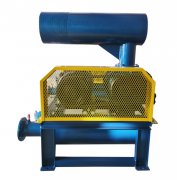Do you have a 220V Roots blower that can be used for household use
A 220V Roots blower is a type of Roots blower driven by a 220V voltage. Its working principle is the same as that of a typical Roots blower, mainly relying on the relative motion of two blade rotors (usually three bladed impellers) in the cylinder to compress and transport gas. The following is a detailed introduction about the 220v Roots blower:
1、 Main features
1. Simple structure: A 220V Roots blower typically consists of a casing, impeller, motor, and other components, with a compact structure that is easy to install and maintain.
2. Stable performance: Due to its volumetric working principle, the 220v Roots blower has stable flow and pressure output, making it suitable for various occasions that require continuous and stable gas delivery.
3. Low noise: Through reasonable structural design and noise reduction measures, the 220v Roots blower produces low noise during operation and will not cause interference to the surrounding environment.
4. Strong adaptability: The 220V Roots blower can transport various media such as air, coal gas, biogas, etc., and can adapt to different temperature and pressure conditions.
2、 Application Fields
220V Roots blower is widely used in multiple fields, including but not limited to:
1. Aquaculture: used to oxygenate fish ponds, increase dissolved oxygen levels in water, and promote respiration and growth of aquatic organisms.
2. Wastewater treatment: Used in the process of wastewater treatment, such as aeration and stirring, to improve the efficiency of wastewater treatment.
3. Chemical industry: used for transporting media such as gases and dust to meet the gas transportation needs in chemical production processes.
4. Food industry: used for material transportation, ventilation and air exchange in the food processing process.
3、 Selection precautions
When choosing a 220v Roots blower, the following factors need to be considered:
1. Flow and pressure requirements: Select the appropriate Roots blower model and specifications based on the specific gas flow and pressure requirements of the application scenario.
2. Medium characteristics: Consider the properties of the conveying medium, such as temperature, humidity, corrosiveness, etc., and select suitable materials and sealing methods.
3. Operating environment: Consider the operating environment of the Roots blower, such as temperature, humidity, vibration, etc., and choose a model and configuration that can adapt to these environments.
4. Energy consumption and efficiency: Pay attention to the energy consumption and efficiency indicators of Roots blowers, choose energy-saving models, and reduce operating costs.
4、 Maintenance and upkeep
To ensure the long-term stable operation of the 220v Roots blower, regular maintenance work is required, including:
1. Cleaning and lubrication: Regularly clean the casing, impeller, and other components of the Roots blower to maintain their surface cleanliness; At the same time, lubricate components such as bearings to reduce wear and friction.
2. Check fasteners: Regularly inspect the fasteners of the Roots blower for looseness or damage, and replace or tighten them in a timely manner.
3. Monitoring operation status: By monitoring the operating current, vibration, noise and other indicators of the Roots blower, potential faults can be detected and dealt with in a timely manner.
4. Regularly replace vulnerable parts: Based on the usage of the Roots blower and the manufacturer's recommendations, regularly replace vulnerable parts such as bearings, seals, etc.
In summary, the 220v Roots blower has the advantages of simple structure, stable performance, low noise, and strong adaptability, and has been widely used in multiple fields. In the process of selection and use, specific application scenarios and requirements need to be considered to ensure the normal operation and long-term stability of Roots blowers.



